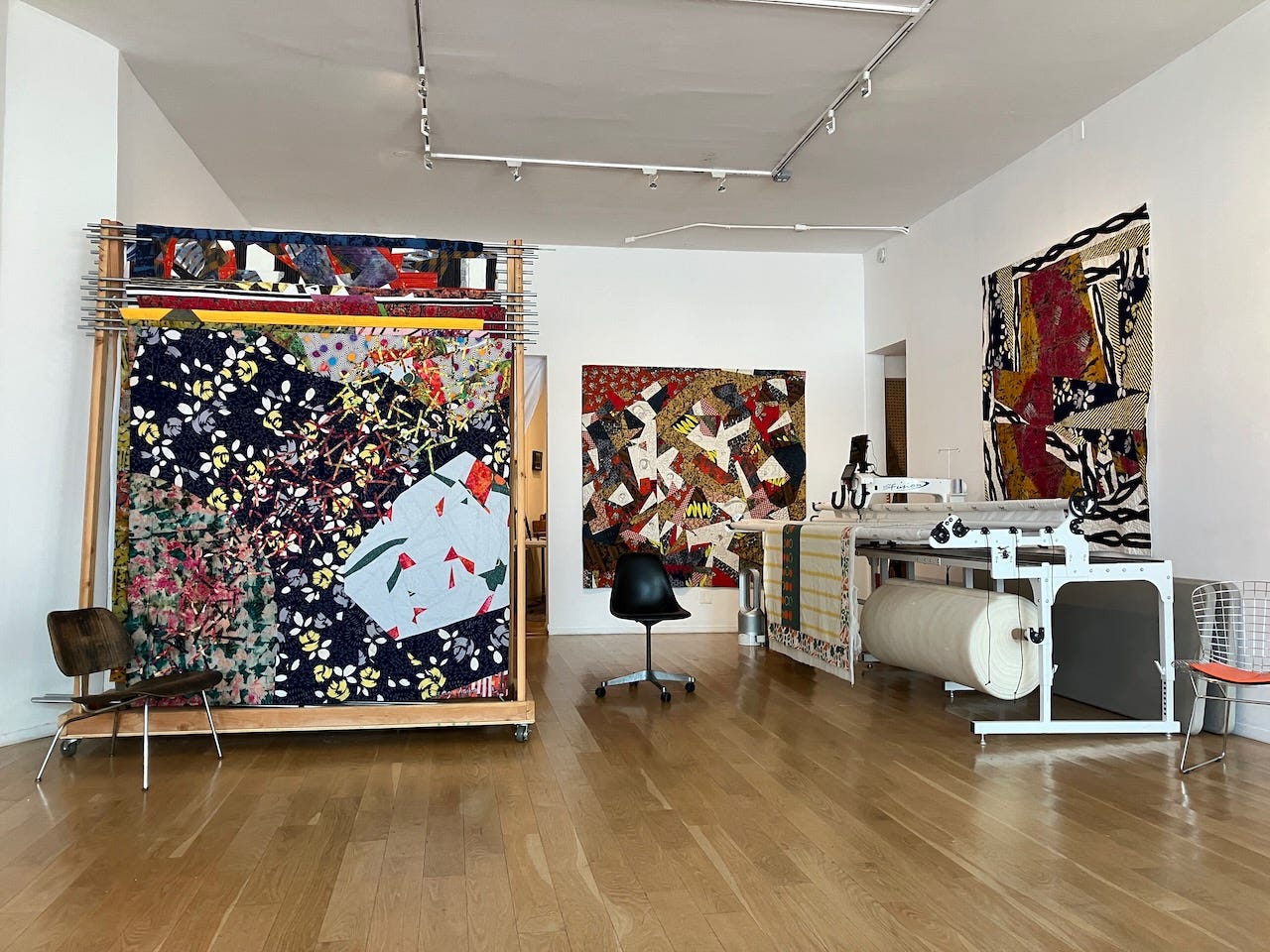The Uncommon Quilts of Joe Cunningham
When Joe Cunningham started making quilts, in 1979, it was an unusual occupation for a man—a fact that set him free as a fabric artist.
Dear Friends,
Quilts, and the techniques for making them, have been around in some form for eons. While often treated as a “domestic” craft or a folk art—and sometimes overlooked entirely—quilting today is serious business. Its vitality will be well illustrated by the upcoming International Quilt Market in Houston, TX—a trade show that attracts some 55,000 professionals from around the globe. This craft is now growing so quickly that by 2026, the quilting industry is expected to generate $5 billion in revenue in North America alone.
Today’s feature profiles an artisan who has been part of the modern quilting movement for more than four decades, and he has some interesting takes on the evolution of this craft. We hope you’ll enjoy reading our new story, “The Uncommon Quilts of Joe Cunningham,” written by contributing editor Jeff Greenwald.
We always welcome your thoughts and suggestions, which you can offer in a comment, by tagging us in Substack Notes, or via email. Thank you for reading and sharing our stories, for supporting our work with a paid subscription if you can, and for being such a loyal part of the Craftsmanship community.
Sincerely,
Todd Oppenheimer
Publisher & Editor-in-Chief, Craftsmanship Magazine

The Uncommon Quilts of Joe Cunningham
by
The insistent whir of an HQ Stitch sewing machine is a sound like no other. It fills Joe Cunningham’s San Francisco quilting workshop—a smallish room, stacked with fabrics, behind his sunlit San Francisco gallery—and he raises his voice to be heard.
“It's not that different from some regular machine. But while a lot of domestic machines have fancy stitches and programs, this doesn't have any of that. All it does is go forward, very fast. And that's all I need: a straight stitch. I don't use any fancy stitches, so this is perfect for me.”
Prior to meeting Joe, I—like many men—had but a vague idea of what a quilt actually is, much less how to create one. Patient and confident, with the affability he displays in his online teaching programs, Joe walks me through the steps.

“A quilt is three layers,” he explains. “When you look at a quilt laying on a bed, the color design that you see is called the quilt top. Underneath that, there'll be the quilt backing. And between those two layers is stuffing—batting—of some kind or another. And the stitches that hold those three layers together is called the ‘quilting.’ So you quilt your quilt, right? It's a verb as well as a noun. You have to quilt your quilt to make it quilted.”
The colorful, complex quilts hanging on the walls of Joe’s Market Street gallery are spontaneous; he doesn’t sketch their designs out first. “I work directly with the cloth,” he says.
“So you think of your cloth as your paint,” I suggest.
“You could think of it that way,” he nods. “I think of it as my cloth.”




